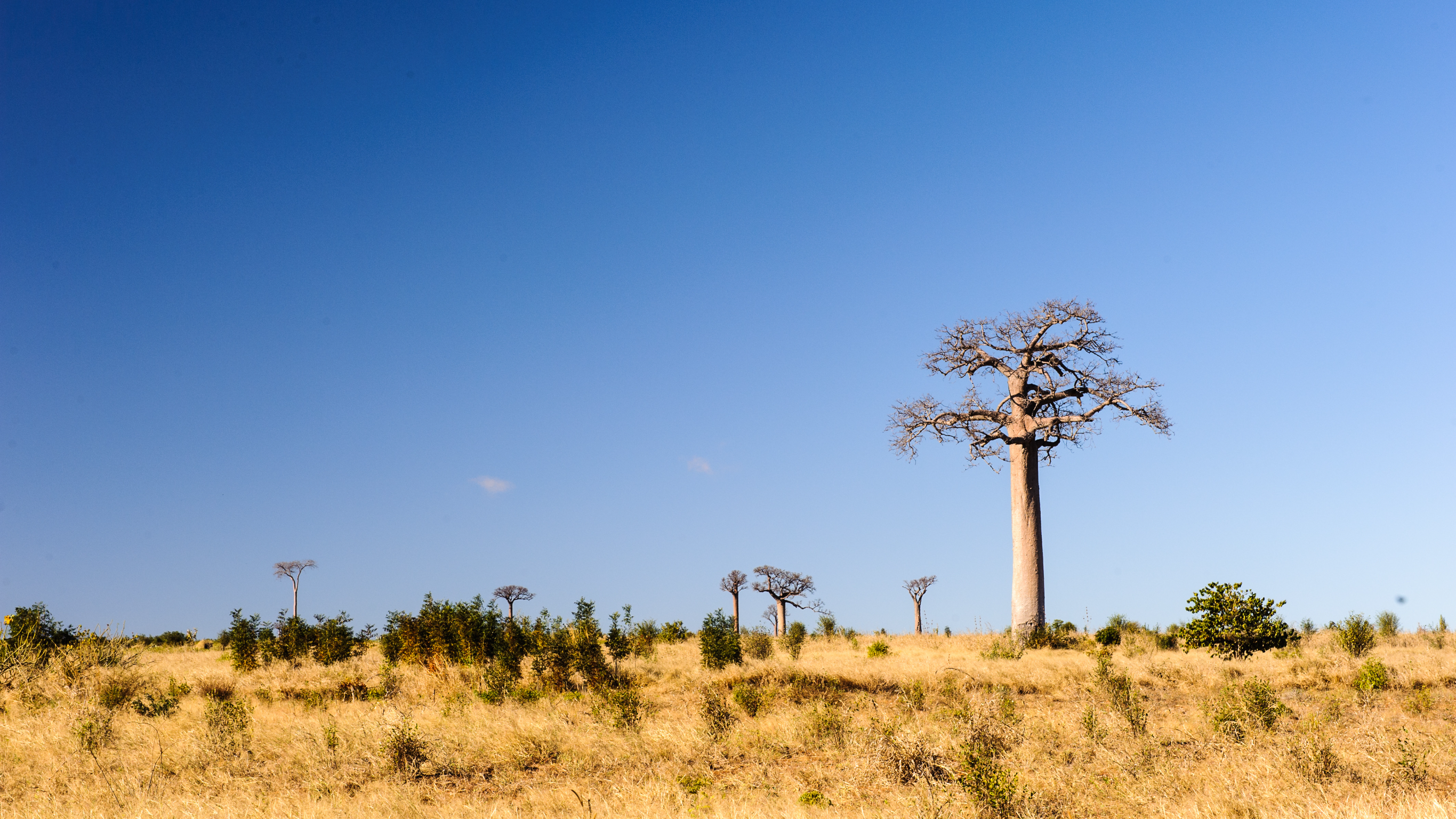Madagascar Travel Tips: Your Ultimate Guide

Madagascar, the world's fourth-largest island, is a treasure trove of natural wonders, diverse wildlife, and rich culture. If you're planning a trip to this enchanting island, you're in for an adventure of a lifetime.
However, travelling to Madagascar requires careful planning and consideration. This Ultimate guide will provide essential Madagascar travel advice to guarantee a pleasant, secure, and unforgettable trip.
1. When to Visit Madagascar
The best time to visit Madagascar depends on what you want to see and do. The island experiences two primary seasons: the dry one (April to November) and the wet season (December to March).
Dry Season (April to November)
The dry season is the busiest time to go to Madagascar. These are the best months to go hiking, wildlife watching, and beach visits because of the cooler temperatures and decreased precipitation. The tourist season runs from July to September, especially for whale watching.
Wet Season (December to March)
The wet season brings heavy rains, particularly in January and February. While this period is less favourable for outdoor activities, it's a great time to visit to avoid crowds and experience the lush green landscapes. Just be prepared for potential travel disruptions due to the weather.
2. How to Get to Madagascar
Madagascar is an island nation, so air is the primary way to get there. Ivato International Airport in Antananarivo is the main entry point for international travellers. Several airlines operate flights to Madagascar from major cities around the world.
Direct Flights
Direct flights to Madagascar are available from a few cities, including Paris, Johannesburg, and Nairobi. You will probably need to make a connection through one of these cities if you are travelling from the United States.
Connecting Flights
Connecting flights are also an option, with layovers in cities like Addis Ababa, Istanbul, or Dubai. Verify the requirements for any nations you may transit through.
3. Entry Requirements and Visas
Before travelling to Madagascar, you need to ensure you have the proper documentation. The majority of travellers will require a ">visa to enter Madagascar.
Tourist Visas
Tourist visas are available when you arrive at Ivato International Airport or through the Madagascar embassy or consulate in your home country. The cost of a visa varies based on the duration of your stay, which usually ranges from 30 to 90 days
Required Documents
- A active passport with a minimum of 6 months of activity from the date of entry
- A return or onward ticket
- Proof of accommodation
- Sufficient funds for your stay
4. Health and Safety
Madagascar is a developing country, and travellers should adhere to specific safety and health measures to guarantee a smooth trip.
Vaccinations
Before travelling to Madagascar, it's recommended that vaccinations be obtained for hepatitis A, typhoid, and rabies. Additionally, ensure you're up-to-date with routine vaccinations such as measles, mumps, rubella, and tetanus.
Malaria Prevention
Malaria is prevalent in Madagascar, so take preventive measures such as taking antimalarial medication, using insect repellent, and sleeping under mosquito nets.
Safety Tips
- Avoid travelling alone at night, especially in unfamiliar areas.
- Keep your valuables secure and be alert of pickpockets.
- Stay informed about the local political situation and avoid any areas of unrest.
5. Currency and Money Matters
The Malagasy Ariary (MGA) is the official currency of Madagascar. Here are some tips for managing your money while travelling in Madagascar.
Exchanging Money
Money can be exchanged at banks, lodging facilities, and authorised exchange bureaus. You should exchange a small amount of money before you arrive for immediate expenses.
ATMs and Credit Cards
ATMs are available in major cities and towns, but they may not be as widespread in rural areas. In larger cities, hotels, restaurants, and shops accept Visa and Mastercard widely, but for smaller businesses and outlying areas, it is always a good idea to have some cash on hand.
6. Language and Communication
Madagascar's official languages are French and Malagasy. Since English is not widely used, it can be very beneficial to learn a few basic French or Malagasy phrases.
Useful Phrases in Malagasy
- Hello - Salama
- Thank you- Misaotra
- Please - Azafady
- Goodbye - Veloma
Communication Tips
- Think about purchasing a local SIM card for your device to stay connected.
- Use translation apps to help with language barriers.
- When interacting with residents, exercise patience and civility.
7. Transportation in Madagascar
Getting around Madagascar can be challenging due to the island's size and varying road conditions. Here are some transportation options to consider.
Domestic Flights
Long-distance travel is made convenient with domestic flights. Air Madagascar and Tsaradia are the main airlines that operate flights between major cities and vacation spots.
Taxi-Brousse
Public transport most commonly takes the form of taxi-brousse, also known as bush taxis. They are affordable but can be crowded or uncomfortable for long journeys.
Car Rentals
Renting a vehicle allows you to do so at your own pace. However, be aware that road conditions can be poor, especially during the wet season. It's recommended to hire a driver who is familiar with the local roads.
8. Accommodation Options
Madagascar provides a variety of lodging choices to meet different budgets and preferences.
Hotels and Lodges
From luxury hotels to budget lodges, you'll find various options in major cities and tourist areas. Reservations are recommended in advance, particularly during the busy season.
Guesthouses and Homestays
Guesthouses and homestays provide a more authentic experience and the opportunity to interact with locals. These are usually more affordable and can be found in smaller towns and rural areas.
Eco-Lodges
Eco-lodges are a popular choice for travellers who want to stay in environmentally friendly accommodations. These lodges often offer unique experiences like guided nature tours and wildlife spotting.
9. Must-Visit Attractions
Madagascar is home to numerous natural and cultural attractions. Here are some must-visit places on your trip.
Avenue of the Baobabs
One of the most iconic sights in Madagascar, the Avenue of the Baobabs, is a row of towering baobab trees that create a breathtaking landscape, especially at sunset.
Andasibe-Mantadia National Park
This park is a prime destination for wildlife enthusiasts. It's home to the famous Indian lemur and offers excellent opportunities for hiking and birdwatching.
Nosy Be
Nosy Be is a popular island destination known for its beautiful beaches, vibrant marine life, and relaxed atmosphere. It's perfect for diving, snorkelling, and beach relaxation.
Tsingy de Bemaraha National Park
This World Heritage Site is home to unique limestone formations known as tsingy. It's an adventurous destination with opportunities for hiking and rock climbing.
10. Cultural Etiquette and Respect
Respecting regional customs and practices is crucial when travelling in Madagascar. Here are some cultural etiquette tips to keep in mind.
Greeting and Interaction
- Always greet people with a smile and a friendly "Salama."
- It is courteous to get someone is permission before snapping their picture.
- Wear modest clothing, particularly when visiting places of worship and in rural areas.
Local Traditions
- Respect sacred sites and follow any guidelines provided by local guides.
- Participate in local customs and traditions when invited, because it demonstrates your respect for the community.
Conclusion
Travelling to Madagascar is a unique and rewarding experience. By adhering to these travel suggestions, you'll be ready to this extraordinary island and create unforgettable memories. The beautiful scenery and variety of wildlife to the vibrant culture and warm hospitality, Madagascar offers something for every traveller. So pack your bags, embrace the adventure, and get ready to discover the wonders of Madagascar.
Madagascar is a unique and rewarding travel destination with its stunning landscapes, diverse wildlife, rich culture, and warm hospitality. Through thoughtful preparation and thought, you can guarantee a safe, enjoyable, and memorable trip. Follow the tips in this guide, respect local customs and traditions, and embrace the adventure. Madagascar is waiting to be discovered!
FAQs
What is the best time to visit Madagascar for wildlife viewing?
When it comes to seeing wildlife, April through November is the best time of year to visit Madagascar during the dry season. During these months, the weather is cooler, and animals are more active, making it easier to spot lemurs, birds, and other wildlife.
Do I need a visa to travel to Madagascar?
Yes, the majority of travellers require a visa to visit Madagascar. Tourist visas are available upon arrival at Ivato International Airport through the Madagascar embassy or consulate in your home country.
Is it safe to travel to Madagascar?
Madagascar is generally safe for tourists, but it's important to take common safety precautions. Avoid travelling alone at night, keep your valuables secure, and stay informed about the local political situation.
What vaccinations are required to travel to Madagascar?
It's recommended that vaccinations for hepatitis A, typhoid, and rabies be obtained before traveling to Madagascar. Additionally, ensure you're up-to-date with routine vaccinations such as measles, mumps, rubella, and tetanus.
What are the main languages spoken in Madagascar?
Madagascar's official languages are French and Malagasy. Since English is not widely used, it can be very beneficial to learn a few basic French or Malagasy phrases.
Get Your Madagascar eVisa
Step1: Complete the online application form by providing your passport details.
Step2: Safely process your payment using your credit card through our secure online platform.
Step3: Monitor your email for payment verification and the electronic dispatch of your eVisa.
